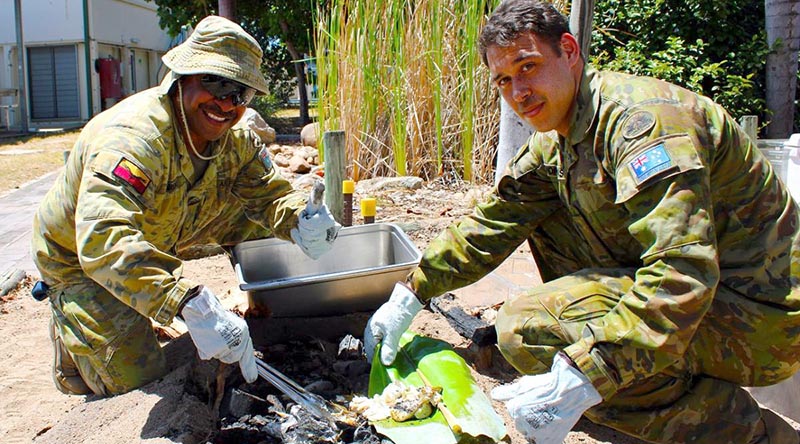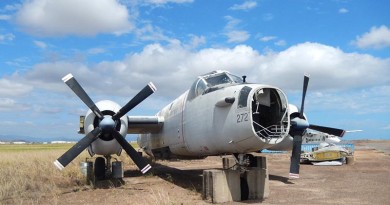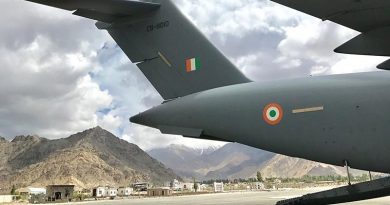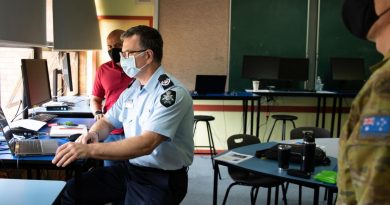Cultures come together over bush tucker BBQ

Knowing where to find bush tucker and how to prepare it are among the core skills being taught to students at the Combat Survival Training School at RAAF Base Townsville.
CAPTION: No. 2 Security Forces Squadron Airfield Defence Guard Leading Aircraftman Pryce Mareko, left, and 5 Aviation Regiment life-support fitter Craftsman Christopher Morganson at RAAF Base Townsville.
The school’s instructors and Indigenous members held a barbecue recently using Indigenous survivability skills and cooking methods.
Commanding Officer Combat Survival Training School Squadron Leader Simon Longley said lessons were based on the knowledge and skills of Indigenous Australians.
“I’m keen to ensure we enhance the lines of effort identified in the Our Place, Our Skies Indigenous Engagement Strategy to ensure we have a capable future ADF workforce,” Squadron Leader Longley said.
He said the barbecue was an opportunity to taste a range of native fruits and meats, while paying respect to the survival skills of the first Australians.
“One of the things we instil in our students to enhance their survivability is teaching them the basic skills on how to procure water and food and to look after themselves until they can be rescued,” Squadron Leader Longley said.
“We’ve been ably assisted by the Indigenous members on base with their traditional knowledge of cooking and sourcing of foods from Indigenous suppliers, while providing great advice about what is available in this region.”
On the menu was emu, kangaroo, crocodile, barramundi, sea mullet, native finger limes, bush cherries and rainforest lychees, all washed down with cold lemon myrtle tea.
Instructor and Yaegl man Sergeant Tory Tipler arranged the day and prepared the food using a traditional kup-murri earth oven and open-coal fire.
“One of the foods we sourced was sea mullet because it’s a really common fish that can be found in salt or fresh water,” Sergeant Tipler said.
“It has dense scales so for cooking in a survival situation or as bush tucker you can place it straight on the open coals and then peel off the scales once cooked.”
Sergeant Tipler said the kup-murri was not only a great way to prepare food, it also helped bring community members together.
“To create a kup-murri the first step is to dig a hole and start a fire to produce coals, then you cook the food wrapped in banana leaves on the coals, buried for many hours, it’s like a slow cooker,” he said.
RAAF Base Townsville Indigenous Liaison Officer Flight Lieutenant David Williams said it was a significant event for sharing knowledge and culture.
“What better way is there for two cultures to come together and share knowledge than over food,” Flight Lieutenant Williams said.
.
.
.
.
.
.

.
.





